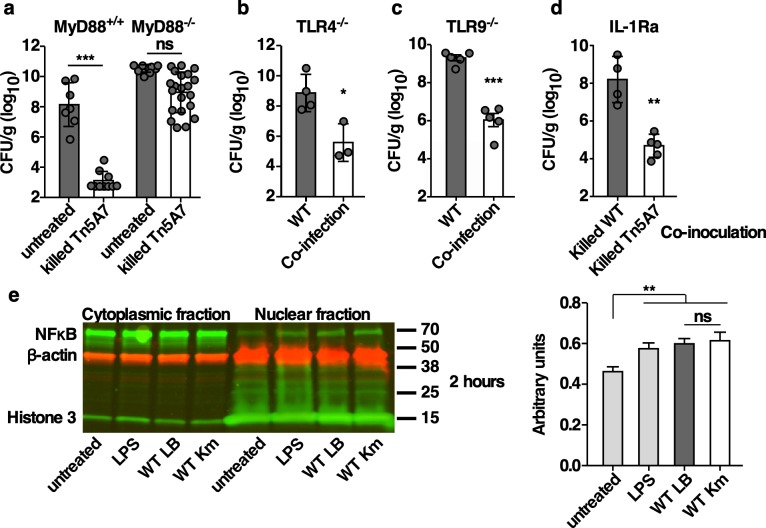Fig 4. Kanamycin propagated A. baumannii-mediated enhanced clearance of WT infection is MyD88-dependent but independent of TLR4, TLR9, or IL-1 signaling.
(a) MyD88+/+ or MyD88-/- mice were infected with WT propagated in lysogeny broth mixed with PBS or mixed with chemically killed Tn5A7 propagated in lysogeny broth containing kanamycin prior to infection. (b) TLR4+/+ or TLR4-/- mice were infected with WT propagated in lysogeny broth mixed with PBS or mixed with chemically killed Tn5A7 propagated in lysogeny broth containing kanamycin prior to infection. (c) TLR9+/+ or TLR9-/- mice were infected with WT propagated in lysogeny broth mixed with PBS or mixed with chemically killed Tn5A7 propagated in lysogeny broth containing kanamycin prior to infection. (d) Mice were treated with 200 μg of the IL-1 receptor antagonist, anakinra, two days prior and on the day of infection with WT propagated in lysogeny broth mixed with PBS or mixed with chemically killed Tn5A7 propagated in lysogeny broth containing kanamycin prior to infection. (e) RAW264.7 cells were treated with LPS or infected with A. baumannii grown in the presence or absence of kanamycin prior to infection and nuclear localization of NFκB was assessed by Western blotting at two hours post-infection. A representative gel image and densitometric quantification of three independent replicates are shown. For panels a, b, c, and d, mice were challenged intranasally and bacterial burdens in the lung at 36 hpi are depicted. Circles represent individual animals, columns depict the mean, and error bars show standard deviation of the mean. Means were compared with the mean of the first column using a one-way ANOVA adjusted for multiple comparisons (e) or Welch’s t-test (a, b, c, and d). CFU/g, colony forming units per gram of organ homogenate; β-actin is a loading control; Histone 3 is a control for nuclear localization; *, P<0.05; **, P<0.01; ***, P<0.001; ns, not statistically significant.

